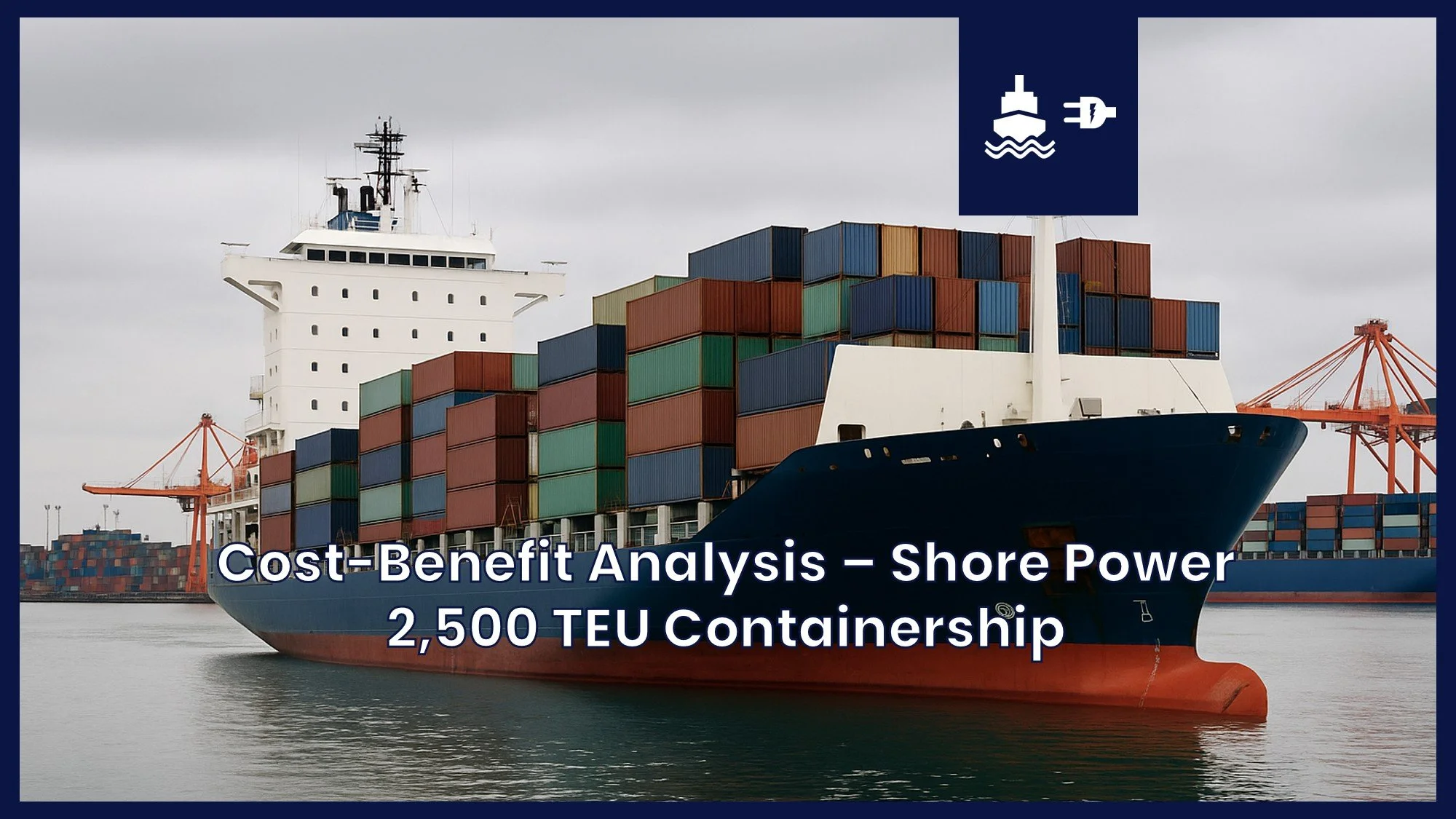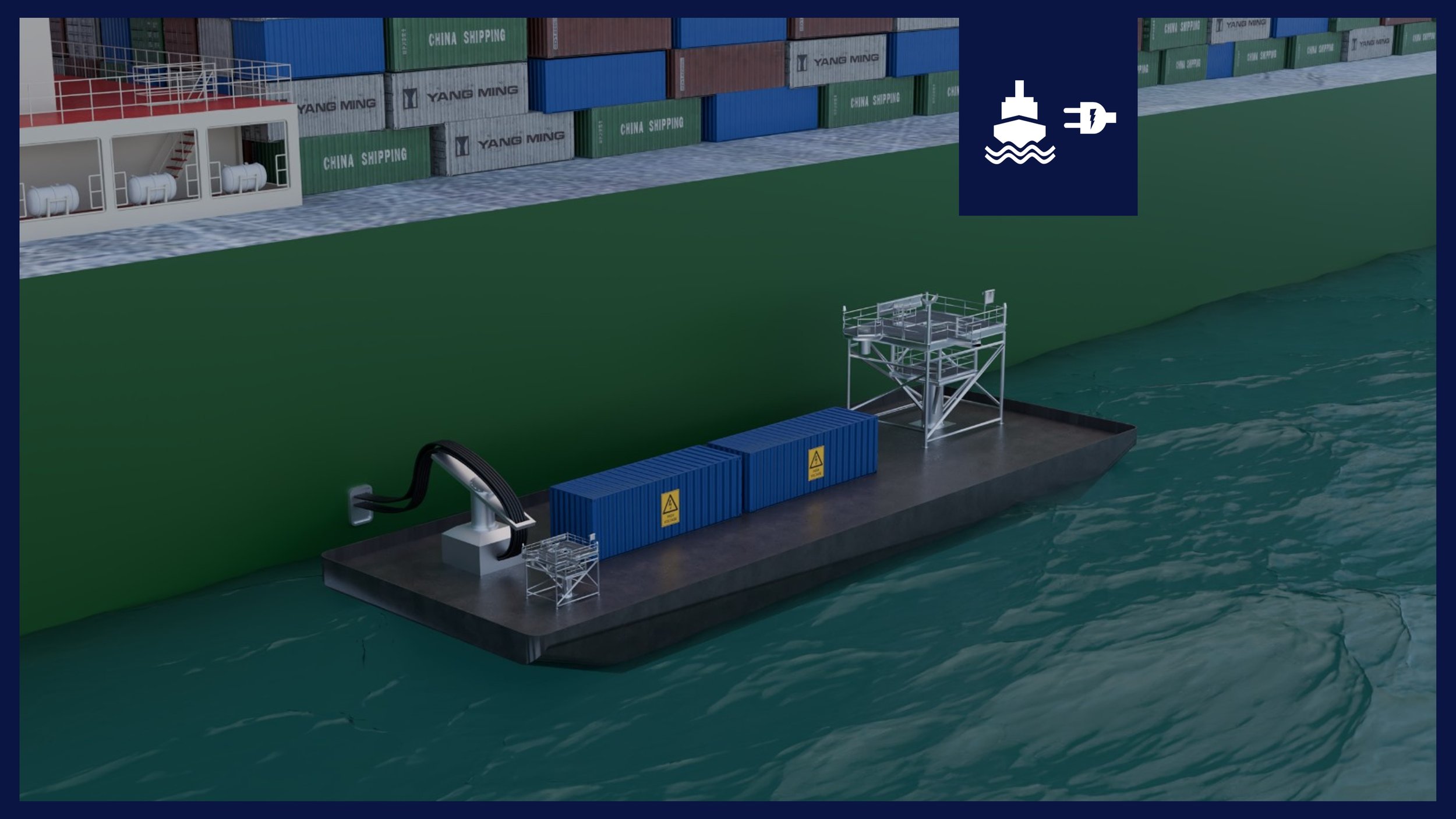What is the average shore power demand of a container ship?
Average shore power demand for a containership is estimated at ~ 600 kW
Accurate estimates of power demand are becoming increasingly critical due to stringent regulations, such as FuelEU Maritime, which will mandate the use of shore power for containerships starting in 2030. Compounding the challenge is the technical complexity of power demand, which varies significantly depending on ship size, onboard equipment installed, and operational profile or design specs. This uncertainty places considerable pressure on terminal owners, port authorities, and developers to design and implement shore power infrastructure without reliable data on the power requirements of incoming containerships.
This blog aims to provide guidance on this issue by comparing Sustainable Ships databases with four reputable sources: IMO, DNV-GL and EMSA. The average shore power demand for all containerships combined is approximately 600 kW when excluding data from EMSA, with power demand varying between 60 kW to over 3,800 kW. Explore the results below and sign up to access all premium tools, databases and expert support to perform your own analyses and refine the results for your situation.
Average shore power demand by …
-
The IMO estimates shore power demand for containerships based on TEU (Twenty-foot Equivalent Unit) sizes, with results ranging from 0 kW for the smallest ships to a maximum of 1,950 kW for the largest vessels. The average power demand across categories is approximately 549 kW. However, these values assume minimal auxiliary systems usage, and no standard methodology ensures consistency across vessel operational modes. This raises questions about the applicability of IMO estimates for ports dealing with diverse ship types and operational profiles.
-
DNV-GL provides shore power estimates based on GT (Gross Tonnage) rather than TEU. The results show a narrower range, with low power demand values at 100 kW and high values capped at 1,000 kW, irrespective of vessel size over 25,000 GT. The average demand is approximately 725 kW. While DNV-GL’s results offer greater uniformity, they potentially oversimplify variations caused by operational profiles or equipment configurations, limiting their precision for developing port-specific infrastructure.
-
EMSA reports the highest shore power demand estimates, ranging from 1,500 kW to 6,000 kW, with an average of 3,417 kW. These figures are based on GT categories and assume high auxiliary loads, making them more suited for worst-case scenarios. While these estimates are useful for ensuring infrastructure robustness, they may lead to overdesign and inflated investment costs for ports where such peak demands are unlikely.
-
As a rule of thumb, a containership requires 10 W per ton GT as per Sustainable Ships’ database.
This method assumes a linear relationship between ship size and auxiliary power needs, offering a practical and easily calculable estimate for planning purposes. Applying this rule results in power demands ranging from approximately 100 kW for smaller vessels (10,000 GT) to 2,500 kW for larger ships (250,000 GT), with an average demand of 750 kW for mid-sized containerships.
While this approach is useful for quick evaluations, it oversimplifies the variability in ship operations, equipment configurations, and auxiliary system loads. The assumption that all GT categories exhibit uniform power demand per tonnage fails to account for outliers, such as vessels with high reefer container loads or energy-intensive operations. Consequently, while the 10W per ton GT rule offers convenience and consistency, it may lead to underestimations or overestimations in scenarios that deviate from the assumed linear relationship. It is best employed as a starting point rather than a definitive guide for detailed shore power infrastructure planning.
-
Sustainable Ships’ analysis uses a database of over 3,000 vessels and calculates demand based on auxiliary engine ratings at 30% load. The results vary from 60 kW to 3,825 kW, with an average demand of 584 kW. Only four data point account for the highest outlying values, all except these are below 2,000 kW. This approach considers individual ship characteristics, offering flexibility and adaptability for customized analyses. However, the reliance on assumptions, such as a consistent engine load percentage, introduces potential inaccuracies when operational profiles deviate from the assumed norms.
Available for members or pay-per-use
References
IMO - 2020 GHG Report
EMSA - EMSA Shore Supply Study Part 1
DNV-GL - GLOMEEP Shore Power Information Portal
Sustainable Ships - Average Shore Power Demand Tool
Downloads available for members and premium users





























